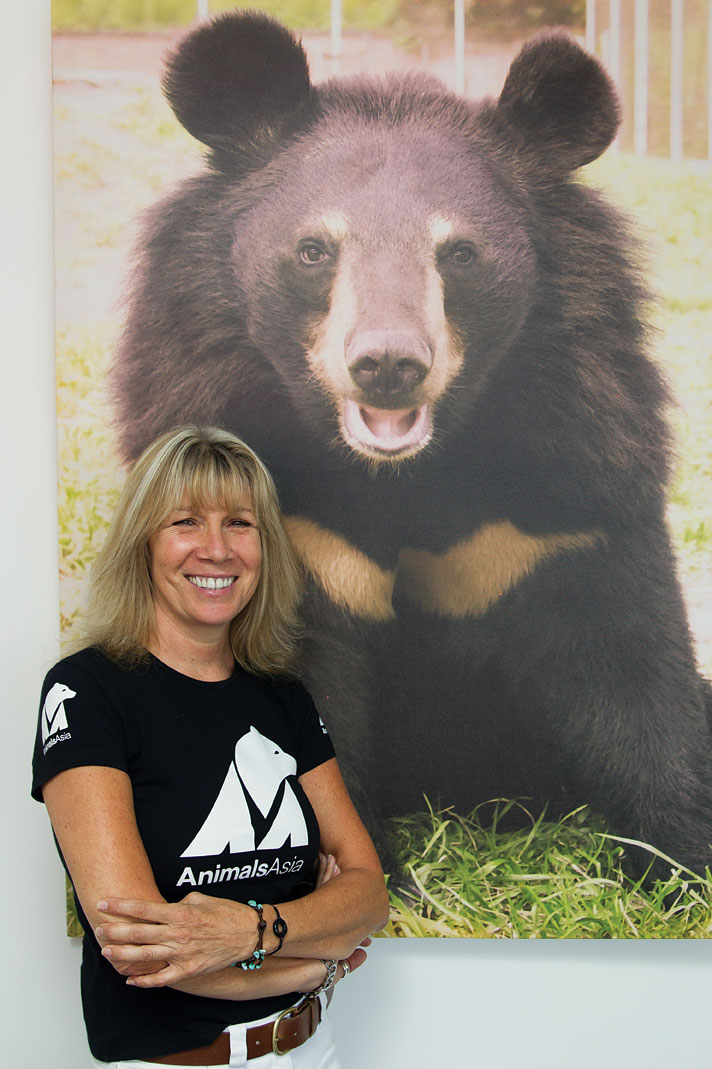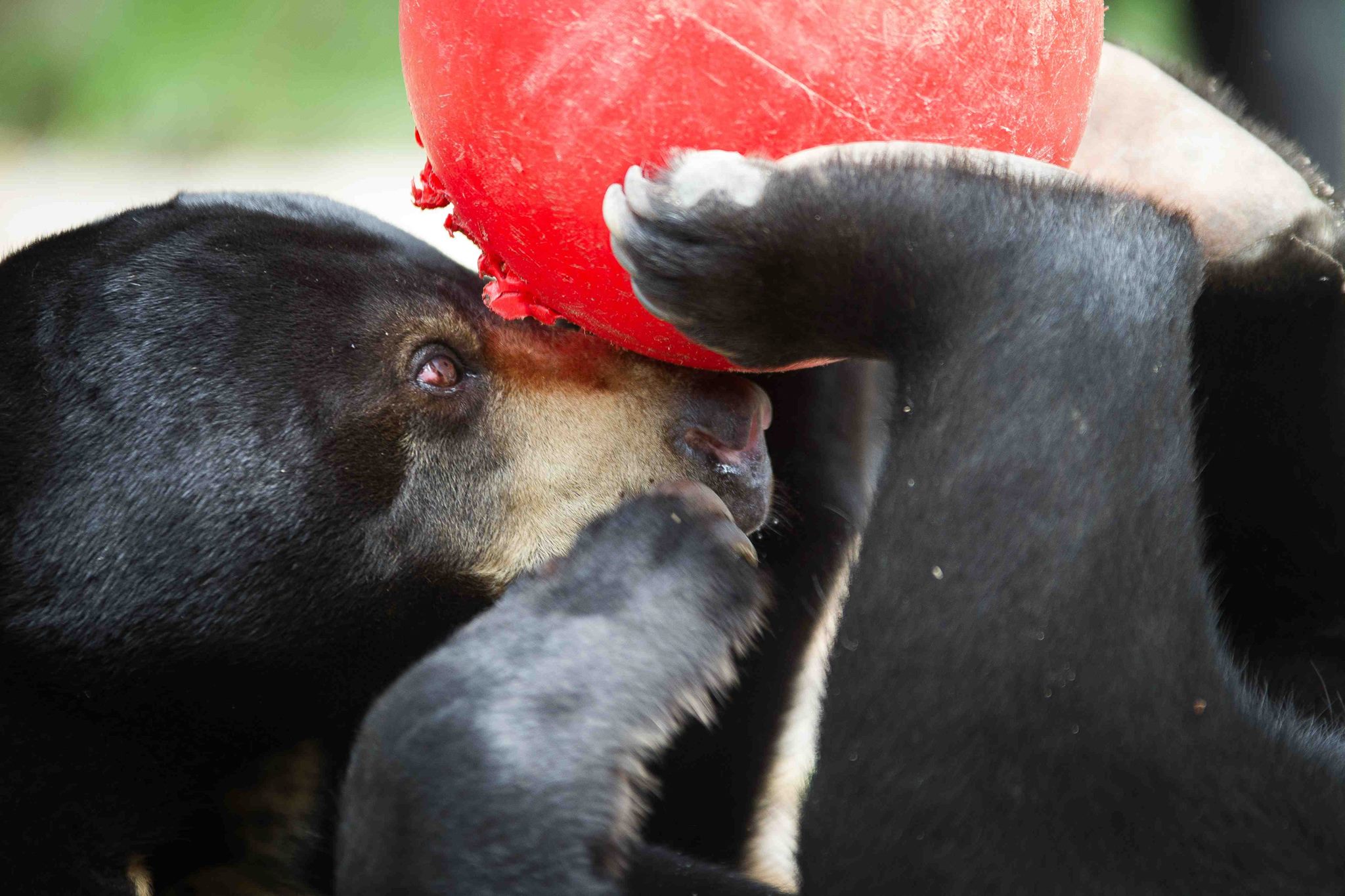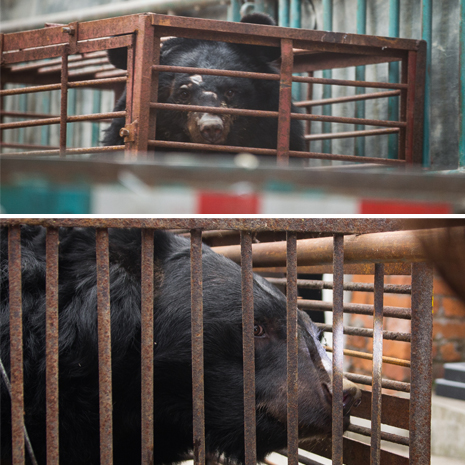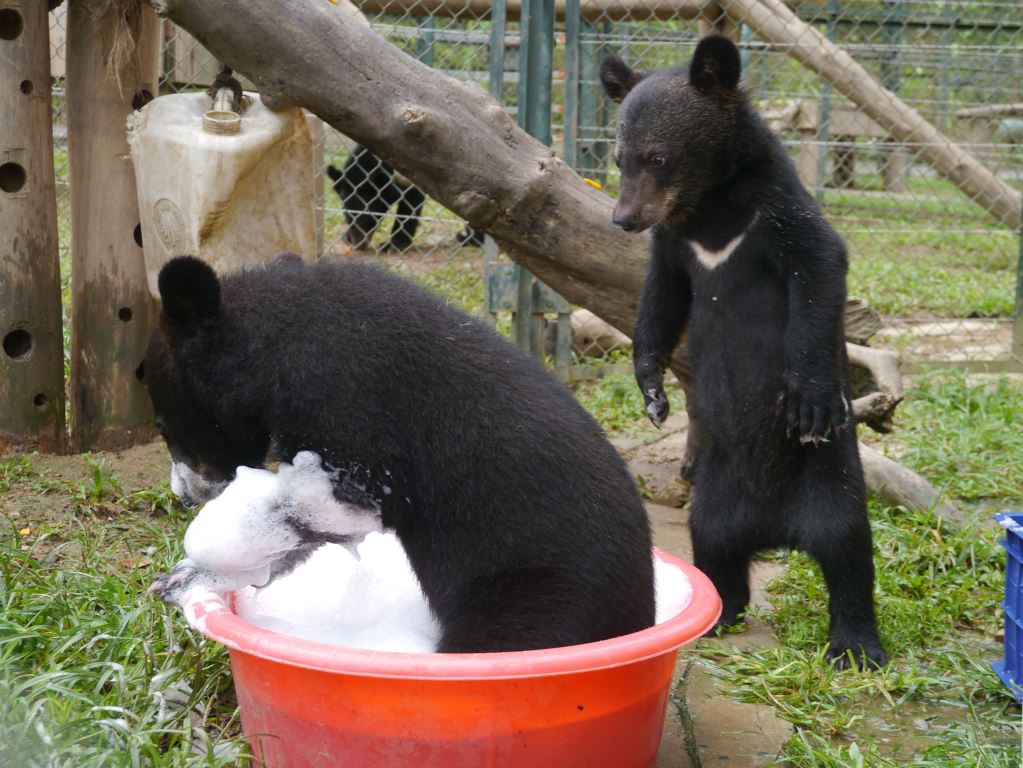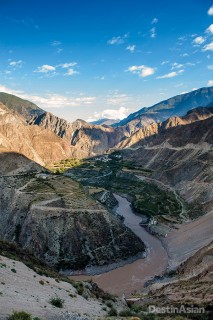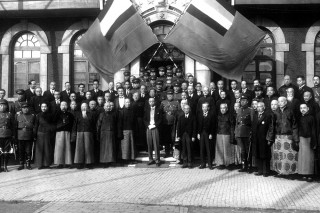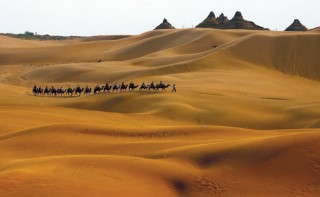Two years later, in April 2013, I visited the center in Tam Dao. For two days, I joined Robinson’s talented team to experience what goes into the operation on a daily basis, which is a lot, to say the least. I tagged along through the necessary routines, such as accompanying the vet team while they performed checkups on bears in the sanctuary. At one point, some government officials stopped by to celebrate the launch of a book Animals Asia coproduced with the Traditional Chinese Medicine Association of Vietnam entitled Herbal Alternatives to Bear Bile. And, in what proved the most inspiring part of the trip, I had the privilege of assisting Robinson on a bear-rescue mission.
In a caravan of three vehicles, we drove to a farmer’s house three hours north of Hanoi, whereupon we sedated the bear—a female named Ung Hoa—and performed a necessary health check before embarking with her back to the sanctuary. Ung Hoa was the farmer’s only bear, but because of his family’s attachment to her, he no longer extracted her bile. He decided she deserved a better life and surrendered her, making Ung Hoa Animals Asia’s 400th rescued bear.
Despite the positivity of its work, Animals Asia keeps the harsh world of bile farming at the forefront of its consciousness. Wooden crescents representing each bear that has died as a result of the industry fill a cemetery on the grounds of the Chengdu sanctuary—grim reminders of the horrific conditions endured on bile farms. Countless cages seized from the farms are stacked high, providing visitors with a haunting visual. What troubles Robinson the most is that the obvious cruelty of bile farming is not more widely acknowledged.
Anyone in animal welfare can testify that fighting animal cruelty is arduous at best, requiring years of laborious lobbying, gaining the necessary support from governments, obtaining patrons for financial aid, and getting the right team on board to fight for a single goal. Yet equally as essential is a firm conviction and refusal to give up, even when positive results are sparse. Robinson has these qualities, and they’ve proven increasingly necessary for Animals Asia. In late 2012, for example, the director of the Tam Dao National Park threatened to evict the sanctuary in order to build an ecotourism resort on the property. Animals Asia launched a campaign to reverse the eviction, the global media picked up on the story, and the Vietnamese government granted a reprieve, firing the park director in the process.
Animals Asia now runs extensive public awareness campaigns throughout China and Vietnam, and has raised its international profile as well. Supporters include celebrity patrons such as Ricky Gervais, Ali McGraw, and Olivia Newton-John; Stella McCartney has designed moon bear T-shirts for the foundation; and the likes of CNN, Animal Planet, and National Geographic Channel have aired documentaries about its work. Subsequently, with the increased attention has come an increased workload for Robinson, who rarely spends more than two weeks in one place, what with field work, conducting programs, and attending conferences worldwide.
On the way back from rescuing Ung Hoa, I asked Robinson how she felt about her achievements. Her reaction was mixed. On one hand, she said she finds great satisfaction in seeing rescued bears rehabilitated, but on the other, she’s keenly aware that there are multitudes more in need of help. So what has kept her motivated all these years?
“We rescue bears,” she said after a pause, “but really, it’s them who are rescuing us.”
For more information about Animals Asia, visit Animals Asia.
This article originally appeared in the February/March 2014 print issue of DestinAsian magazine (“Rescuing Asia’s Moon Bears”)

